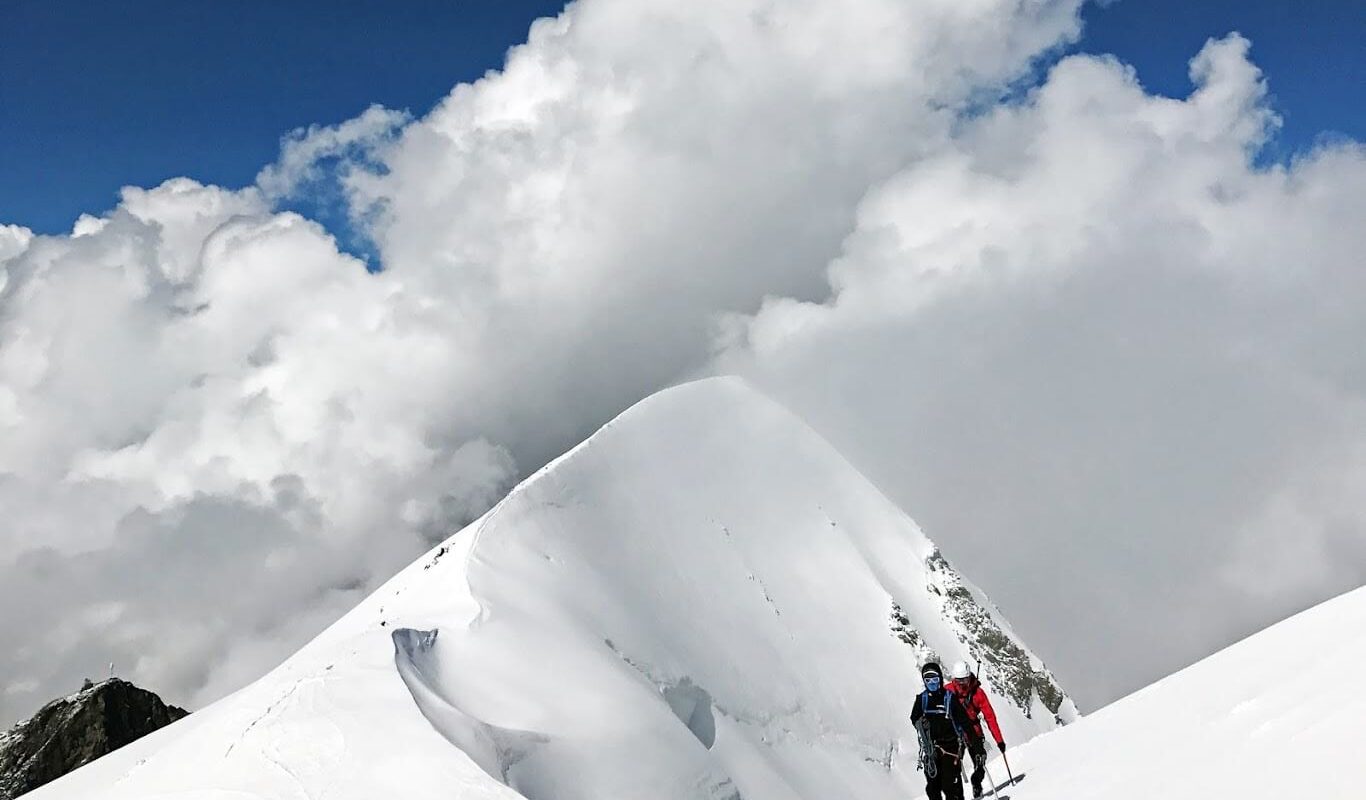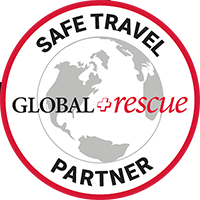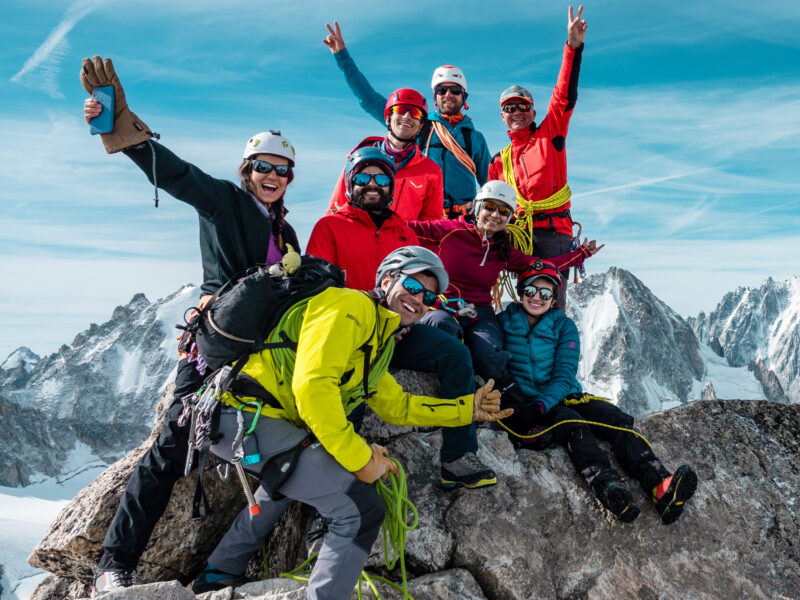BY Rami Rasamny | November 07 2018
An Easy Guide To Getting Started in Mountaineering


“Anyone who takes money from you without a recognized guiding certificate is scamming you.”
Getting started in mountaineering can be an unnecessarily daunting endeavor. With all the social media noise around different mountains and different trajectories on how to get there it can be a little discouraging. We’ve put together a quick guide on how to get started to help you on your way to the summit.
1- START CLIMBING WITH A IFMGA MOUNTAIN GUIDE
The International Federation of Mountain Guides is the most recognized certification for high altitude mountain guides globally. Anyone who takes money from you without a recognized guiding certificate is scamming you. Mountain guides from alpine clubs that are IFMGA certified have all qualified under a minimum standard that enables them to guide and teach amateurs and first timers. It is illegal to act as a high altitude mountain guide without an IFMGA certificate or equivalent. The same rules do not apply for trekking or wall climbing which have their own standards agencies. Although our IFMGA guides are mostly based in and around Chamonix and the European alps, you can find a IFMGA guides in most alpine resorts around the world.
2- CHAMONIX IS GREAT FOR THE ACCESS
Yes, there are incredible places all around the world to get started but for us Chamonix and the Mont Blanc Massif is unrivaled in terms of variety, facilities and access. It is also a little less heavy on the wallet compared to places like Switzerland just across the border. Because of the network of cables and the huge concentration of mountains in the area, this is the place where you really don’t waste any time. Within minutes, you can go from the valley at 900 meters to nearly 4000 meters by cable and get right onto the glacier. From there you have everything from introductory glacier travel to some of the most challenging faces on the planet. You can also use Chamonix as a base to explore as far away as Zermatt in Switzerland or Viso in Italy.
3- DON’T BUY UNTIL YOU TRY
If you’re anything like me, once you’ve booked your first ever mountaineering experience, your next stop will likely be the local adventure store where you rely on the vendor to tell you what you need.

“If you’re anything like me, once you’ve booked your first ever mountaineering experience, your next stop will likely be the local adventure store where you rely on the vendor to tell you what you need. DON’T DO IT!”
DON’T DO IT! You can certainly buy the basics like your Gortex layers and down jackets but avoid buying any technical gear, including shoes, until you’ve gained a real understanding of what you’ll be doing and where you’ll be going. The shoes may all look the same at first but you really don’t want to be climbing the Dibona in La Sportiva Evos and you really don’t want to be using Everest Summit boots on the Aiguille Du Tour unless you want to feel super out of place. Leave the technical gear to your the first day with your guide. He probably gets great discounts anyway.
4- TAKE IT ONE STEP AT A TIME
Just because you put your first steps on the glacier doesn’t mean that the next stop is the north face of the Eiger. Mountaineering is a giant sport with infinite ways you can take it. You may find that glacier travel is exactly where you’re happiest and that is perfectly fine. There are hundreds of high routes to take not to mention the infamous Chamonix-Zermatt glacier trek. On the other hand, you may look to the steeper faces and think that this may be more your thing. There is no right or wrong way to progress in mountaineering as long as you commit to educating yourself about what you want to do, seek advise from those with more experience, and most of all, as long as you’re happy.
5- DON’T FOLLOW THE TREND
Nothing beats hands on experience. But not all experiences are created equally. Spending one on one time with an IFMGA guide on a flat glacier learning about how to pull someone out of a crevasse or understanding the dynamics of how to navigate over air pockets is infinitely more valuable to you in the long run than blindly following a team leader up to the summit of Elbrus. Trust me, you don’t want to be receiving your first lesson on a prusik when you actually need to use it.
Are you looking to get started? Reach out to us on info@lifehappensoutoors.com and we’d love to participate in helping you on your way to the summit.
About The Author
Rami Rasamny is the founder of Life Happens Outdoors, a premium adventure travel community dedicated to transforming lives through curated outdoor experiences. A mountaineer and entrepreneur, Rami has led teams on some of the world’s most challenging peaks, from the Alps to the Himalayas. His mission is to make adventure accessible, transformative, and safe for all who seek to push their limits and Come Back Different.
About Life Happens Outdoors
At Life Happens Outdoors, we believe in the power of nature to transform lives. As proud members of the Adventure Travel Trade Association (ATTA) and the World Travel & Tourism Council (WTTC), our team of certified guides and outdoor professionals is committed to the highest standards of safety, sustainability, and excellence.
Discover more about our story and mission on our Meet LHO page, or explore our curated adventures such as the Tour du Mont Blanc Trek, the Climb of Kilimanjaro, and Chasing the Northern Lights.














